This article was co-authored by Kevin Stone, MD. Dr. Kevin Stone is an orthopaedic surgeon and the founder of The Stone Clinic, a leading orthopaedic surgery, sports medicine, and rehabilitation clinic in the San Francisco Bay Area. With over 30 years of experience, Dr. Stone specializes in knee, shoulder, and ankle repair, using biologic reconstruction and joint replacement. He holds a BS in Biology from Harvard University and a Doctor of Medicine (MD) from the University of North Carolina at Chapel Hill. Dr. Stone completed his residency in Internal Medicine and Orthopaedic Surgery at Harvard University and in General Surgery at Stanford University. He then completed a fellowship in Orthopaedic Research and Surgery at the Hospital for Special Surgery and Tahoe Orthopaedics. He lectures around the world as an expert in cartilage and meniscal growth, replacement, and repair and holds over 40 U.S. patents on novel inventions to improve healthcare. Dr. Stone is a physician for Smuin Ballet and has served as a physician for the U.S. Ski Team, the U.S. Pro Ski Tour, the United States Olympic Training Center, and World Pro Ski Tour.
There are 11 references cited in this article, which can be found at the bottom of the page.
This article has been viewed 93,736 times.
A fractured (broken) rib is a relatively common musculoskeletal injury that typically occurs due to blunt trauma (slip and fall, car accident or football tackle), over-exertion (swinging a golf club), or severe bouts of coughing. There are different degrees of severity, ranging from minor stress or hairline fractures to more serious rib fractures that involve multiple pieces with jagged ends. As such, complications from rib fractures range widely from mild discomfort to life-threatening conditions, such as a pneumothorax (punctured lung).[1] Learning how to assess a potential rib fracture at home is helpful for deciding when to see a doctor, but only healthcare professionals can confirm such a diagnosis. So when in doubt about a painful injury involving the ribs, error on the side of caution and seek medical care.
Steps
Assessing a Fractured Rib at Home
-
1Understand basic anatomy. You have 12 sets of ribs that function to protect your internal organs and allow numerous muscles to attach to for movement and breathing. The ribs attach to the 12 thoracic vertebrae of the spine in the back and most converge and connect to the breastbone (sternum) in the front. A few "floating" ribs at the bottom protect the kidneys and don't connect to the breastbone. Your uppermost ribs are located at the base of your neck (underneath your collarbones), whereas the bottom one resides a few inches above your hip bones.[2] Ribs are usually easily detected under the skin, particularly in thinner people.
- The most commonly fractured ribs are the middle ones (ribs four through nine).[3] They typically break at the point of impact or where the curve is the greatest, which is their weakest and most vulnerable area.
- Rib fractures are much less common in kids because their ribs are more springy (more cartilage and less bone compared to an adult) and require considerable force to break.
- A significant risk factor for rib fractures is osteoporosis, a condition common in people over 50 and characterized by brittle bones from loss of minerals.
-
2Look for a swollen deformity. With the shirt removed, look and feel around the area of the torso where the pain is coming from. With a small hairline rib fracture, you won't see a deformity but should be able to pinpoint the tenderness and maybe notice some swelling — particularly if there was blunt trauma to the area. With more serious rib fractures (multiple breaks in multiple ribs or ribs that have separated from the rest of the wall), a flail chest may occur. Flail chest is a term that describes when the broken chest wall moves in a way that is opposite to the rest of the chest during breathing. Therefore, the chest wall in the area of concern will be sucked in when the person takes a breath and the chest expands and will be pushed out when the person exhales and the chest contracts.[4] More serious rib fractures tend to be very painful, create more swelling (inflammation) and bruise quickly due to broken blood vessels.
- A flail chest is sometimes easier to see when the injured person is lying on his back with his shirt off. The condition will be easily spotted while watching a patient breathe, and especially when listening to his lungs.
- Healthy ribs are usually fairly springy when you put pressure on them. However, broken ribs feel unstable and can be depressed with pressure, which generates severe pain.
Advertisement -
3See if pain increases with deep breaths. Another common sign of broken ribs, even small stress fractures, is increased tenderness or pain with deep breathing.[5] The ribs move with every breath, so inhaling deeply causes pain. With serious rib fractures, even shallow breathing may be very difficult and extremely painful. Consequently, people with significant rib fractures tend to take more rapid and shallow breaths, which can lead to hyperventilation and eventual cyanosis (bluish discoloration of the skin due to lack of oxygen).[6]
-
4Check for reduced motion. Another sign indicative of a rib fracture is reduced range of motion in the torso, especially rotational side-to-side movements.[7] People with broken ribs are either unable or very hesitant to twist, bend or laterally flex their upper body. The broken rib and related muscle spasm may prevent the movements, or the pain may be severe enough to act as a deterrent to any movement. Again, less serious stress (hairline) fractures hamper movement to a lesser extent compared to more injurious fractures.
- Ribs that break at the cartilage junction where they attach to the breastbone can be particularly painful, especially with rotational movements of the upper body.
- Even with small stress fractures, the combination of reduced mobility, impaired ability to breathe, and relative tenderness significantly limits a person's ability to exercise and be active — sports are virtually out of the question until the injury heals.
Getting a Medical Assessment
-
1See your family physician. If you or a significant other has experienced some form of trauma that has caused lingering pain somewhere in your torso, then seeing a doctor for a thorough physical examination and assessment is the best strategy. Even if the pain is relatively mild, seeing a healthcare professional is a good idea.
-
2Know when to get emergency care. It is essential to get immediate medical attention if you have complications that indicate something life-threatening, such as a pneumothorax. Signs and symptoms of a punctured lung include severe breathing difficulty, sharp or stabbing chest pain (in addition to the pain related to the fracture) cyanosis, and extreme anxiety that goes along with the sensation of breathlessness.[8]
- A pneumothorax occurs when air becomes trapped between the chest wall and the lung tissue. This can be caused by a broken rib tearing into the lung tissue.
- Other organs that can be punctured or lacerated by fractured ribs include the kidneys, spleen, liver, and heart (rarely).[9]
- If you have any of the above symptoms, go to the nearest emergency room or contact emergency services.
-
3Get a chest x-ray. Along with a physical assessment, x-rays can visualize bone and are effective for diagnosing the presence and severity of most rib fractures. However, stress or hairline fractures (sometimes referred to as "cracked" ribs) are difficult to visualize on x-rays due to their small size.[10] As such, another series of chest x-rays may have to be taken after the swelling subsides (about a week or so).
- Chest x-rays are also useful in diagnosing a collapsed lung because fluid and air can be visualized on x-ray film.
- X-rays can also detect bruised bones, which can be mistaken for broken bones.
- If the doctor has a good idea where the fracture is, a more focal x-ray of the injured rib can be taken to get a more magnified view.
-
4Get a CT scan. Hairline fractures of the rib are not serious injuries and typically just require short-term use of painkillers or anti-inflammatories while they heal on their own. CT scans can often uncover rib fractures that regular radiographs (x-rays) miss and injuries to organs and blood vessels are also easier to see.[11]
- CT technology takes a variety of x-rays from numerous angles and combines them via computer technology to depict cross-sectional slices of your body.
- CT scans are significantly more expensive than regular plain-film x-rays, so it's worth checking with your health insurance to see if they are covered.
-
5Get a bone scan. A bone scan involves injecting a small amount of radioactive material (radiotracer) into a vein, which then travels through the blood and into your bones and organs.[12] As the radiotracer wears off, it gives off a little bit of radiation, which can be picked up by a special camera that slowly scans your body. Since fractures show brighter on a bone scan, it's a good tool to see even small stress or hairline fractures — even new breaks that are still inflamed.[13]
- Bone scans are effective for visualizing small stress fractures, but because these are not clinically significant, the potential side effects related to the procedure may not be justified.
- The main side effects are related to allergic reactions to the radioactive material (radiotracer) that's injected during a bone scan procedure.
Expert Q&A
Did you know you can get expert answers for this article?
Unlock expert answers by supporting wikiHow
-
QuestionWhat does a rib fracture feel like?
 Kevin Stone, MDDr. Kevin Stone is an orthopaedic surgeon and the founder of The Stone Clinic, a leading orthopaedic surgery, sports medicine, and rehabilitation clinic in the San Francisco Bay Area. With over 30 years of experience, Dr. Stone specializes in knee, shoulder, and ankle repair, using biologic reconstruction and joint replacement. He holds a BS in Biology from Harvard University and a Doctor of Medicine (MD) from the University of North Carolina at Chapel Hill. Dr. Stone completed his residency in Internal Medicine and Orthopaedic Surgery at Harvard University and in General Surgery at Stanford University. He then completed a fellowship in Orthopaedic Research and Surgery at the Hospital for Special Surgery and Tahoe Orthopaedics. He lectures around the world as an expert in cartilage and meniscal growth, replacement, and repair and holds over 40 U.S. patents on novel inventions to improve healthcare. Dr. Stone is a physician for Smuin Ballet and has served as a physician for the U.S. Ski Team, the U.S. Pro Ski Tour, the United States Olympic Training Center, and World Pro Ski Tour.
Kevin Stone, MDDr. Kevin Stone is an orthopaedic surgeon and the founder of The Stone Clinic, a leading orthopaedic surgery, sports medicine, and rehabilitation clinic in the San Francisco Bay Area. With over 30 years of experience, Dr. Stone specializes in knee, shoulder, and ankle repair, using biologic reconstruction and joint replacement. He holds a BS in Biology from Harvard University and a Doctor of Medicine (MD) from the University of North Carolina at Chapel Hill. Dr. Stone completed his residency in Internal Medicine and Orthopaedic Surgery at Harvard University and in General Surgery at Stanford University. He then completed a fellowship in Orthopaedic Research and Surgery at the Hospital for Special Surgery and Tahoe Orthopaedics. He lectures around the world as an expert in cartilage and meniscal growth, replacement, and repair and holds over 40 U.S. patents on novel inventions to improve healthcare. Dr. Stone is a physician for Smuin Ballet and has served as a physician for the U.S. Ski Team, the U.S. Pro Ski Tour, the United States Olympic Training Center, and World Pro Ski Tour.
Board Certified Orthopaedic Surgeon
Warning
- A personal assessment of a fractured rib (or any injury) is never a substitute for a medical assessment by a healthcare professional.
References
- ↑ Kevin Stone, MD. Board Certified Orthopaedic Surgeon. Expert Interview. 19 November 2020.
- ↑ https://www.yalemedicine.org/conditions/rib-fracture
- ↑ https://www.ncbi.nlm.nih.gov/books/NBK541020/
- ↑ https://www.urmc.rochester.edu/encyclopedia/content.aspx?contenttypeid=22&contentid=flailchest
- ↑ Kevin Stone, MD. Board Certified Orthopaedic Surgeon. Expert Interview. 19 November 2020.
- ↑ https://www.nhs.uk/conditions/broken-or-bruised-ribs/
- ↑ https://www.msdmanuals.com/professional/injuries-poisoning/thoracic-trauma/rib-fracture
- ↑ https://my.clevelandclinic.org/health/diseases/15304-collapsed-lung-pneumothorax
- ↑ https://www.betterhealth.vic.gov.au/health/conditionsandtreatments/rib-injuries
- ↑ https://www.msdmanuals.com/professional/injuries-poisoning/thoracic-trauma/rib-fracture
- ↑ https://www.yalemedicine.org/conditions/rib-fracture
- ↑ https://medlineplus.gov/ency/article/003833.htm
- ↑ https://www.hopkinsmedicine.org/health/treatment-tests-and-therapies/bone-scan
- ↑ https://www.mountsinai.org/health-library/selfcare-instructions/rib-fracture-aftercare
- ↑ https://www.mountsinai.org/health-library/selfcare-instructions/rib-fracture-aftercare
About This Article
If you think you have a rib fracture, remove your shirt and feel around your torso for swelling where you feel pain. You may not be able to feel any swelling if it is a hairline fracture, but you should be able to pinpoint the tenderness. A fully broken rib will be incredibly painful and feel unstable when pressed. Another sign of a fractured rib is pain when breathing, so take a few deep breathes to see if the pain increases as you inhale. You should also check if pain is limiting your motion in the torso, especially when you rotate from side-to-side. If you have a sharp or stabbing chest pain and it is especially difficult to breathe, you should get immediate medical care as those are signs of a punctured lung. For more help from our Medical co-author, including how to identify a flail chest, scroll down.





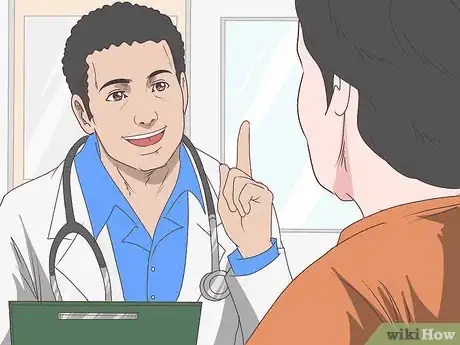
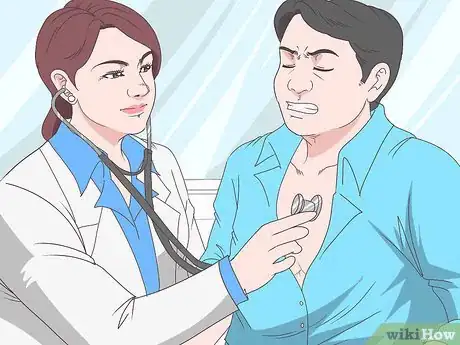
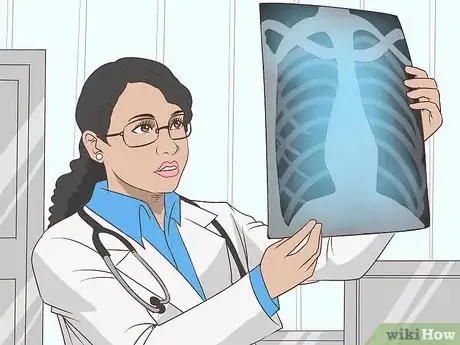
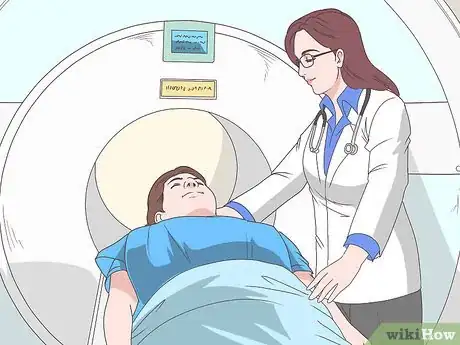
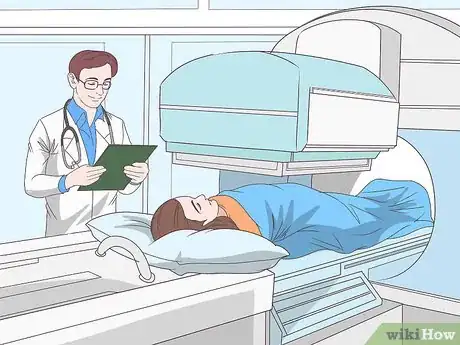
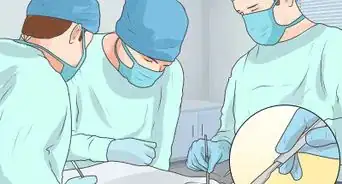
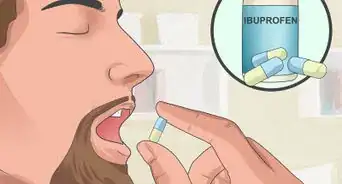


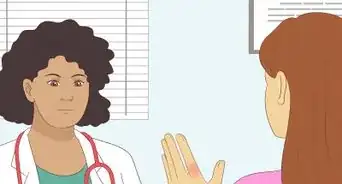

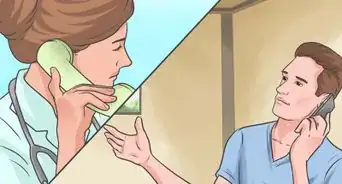
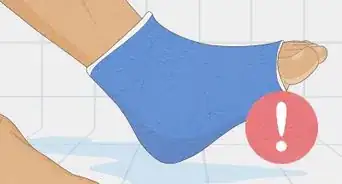

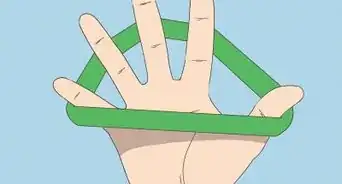

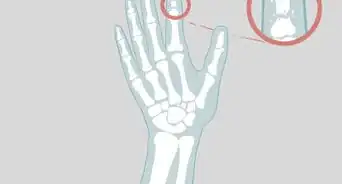









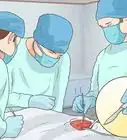

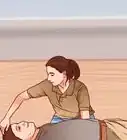




































Medical Disclaimer
The content of this article is not intended to be a substitute for professional medical advice, examination, diagnosis, or treatment. You should always contact your doctor or other qualified healthcare professional before starting, changing, or stopping any kind of health treatment.
Read More...